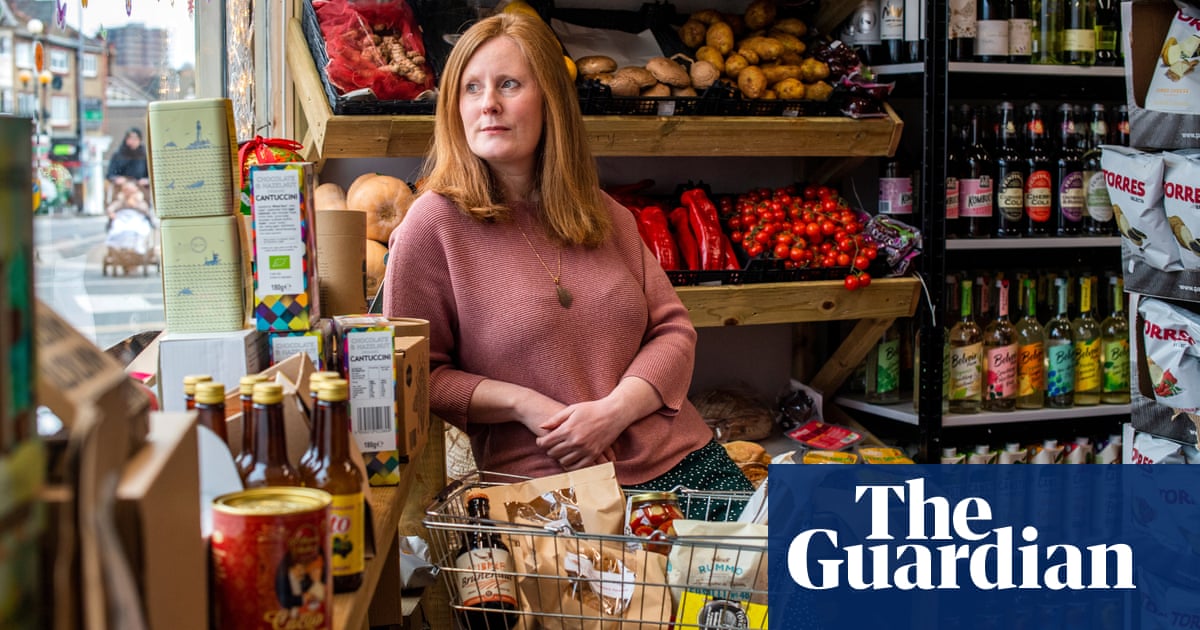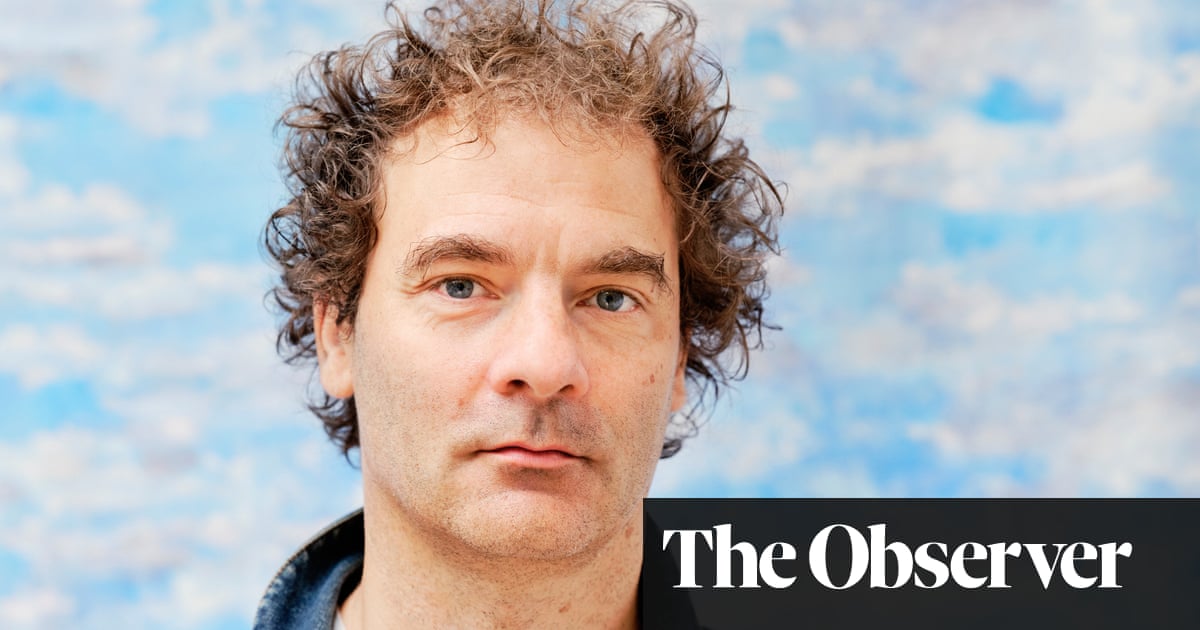
n the kingdom of the East Saxons, towards the end of the seventh century, the noblewoman Ethelburga founded an abbey in a place they called Berecingum, which means “the people who live among the birch trees”. Here she “preserved the glory of perpetual virginity”, says Bede, “in a life of great self-denial”; and when one morning, mindful of the plague, she took her women out to choose the piece of land where they’d be buried, she witnessed light descending from heaven in the form of a shining white sheet. In this way the abbey became holy land, and there the 12th-century nun Clemence translated from Latin into French a life of Edward the Confessor, imploring her readers not to “despise it, nor to disregard the good in it”, merely because she was a woman. The community lasted until the dissolution of the monasteries: the work of women undone by the devices and desires of men. In the soil where the abbey stood, pegs from stringed instruments were found, and tools for weaving, together with gold thread, hair combs and manicure kits: this is the evidence of their accomplishment and beauty. What remains now of the abbey in the birches is only a pale tower on a pavement, and this tower may be reached by taking the Hammersmith & City line out of London to the east: Berecingum has become Barking, and the women of the abbey were Essex girls.
If you might not have suspected Essex of having been the site of that sacred ground and those holy women, I can’t hold you entirely to blame. A landscape is constructed not only from its hills and the species of its common trees, but from the cultural and historical associations attached to it. Heathcliff will always possess the Yorkshire moors; Tess of the D’Urbervilles will sit forever weeping on her Dorset milking stool. So it is impossible now to think of Essex without thinking also of vapid women in leopard print and heels; of the jokes which begin, say: “How does an Essex girl hold her liquor?” and end with a schoolboy smirk. Ethelburga is no match for Gemma Collins; the Essex oaks and sloping fields of flax are no match for the appetite of London’s borders. The cultural phenomenon of the Essex girl has changed the Essex landscape, as if her arrival altered the geology that underpins the towns. This is a reciprocal arrangement; the landscape alters those who are born there. In the language of the Saxons – whose weapon, the seax, its curved blade notched to inflict greater damage to the neck, appears on the Essex coat of arms – stede means “place”, and so every girl born in Essex is steadfast: held to the place of her birth.
The phenomenon of the Essex girl is both modern and the latest iteration of the old misogynist scapegoating – someone must be held to account for the ills of society, and one might as well blame a woman (if she is working class and consequently voiceless, so much the better). The phrase developed during the 1980s, when a national contempt for the county was perhaps provoked by its response to Thatcherism, which was to grow prosperous as the building trade flourished, fostering social mobility. The Essex girl swiftly acquired a series of traits: she was a “suicide blonde”, as the saying goes, dyed by her own hand; she tottered on high heels; she wore so much jewellery she rattled as she walked. She was stupid and fecund and shouted in the streets; she was far too fond of sex (and didn’t the venerable Bede record that Ethelburga’s virginity had required great self-denial?); she was always and only white. By 1991, the Independent had made the first recorded use in print of the phrase as invective, reporting on the recent craze for “‘Essex girl” jokes; meanwhile the Conservative commentator Simon Heffer – an Essex man, as it happens – identified a new kind of voter in the county: “young, industrious, mildly brutish and culturally barren”. By 1997, the term had entered the Oxford English Dictionary: Essex girls were “unintelligent, promiscuous and materialistic” (in 2016, Juliet Thomas and Natasha Sawkins – who were not born in Essex, but had adopted the county and its identity – petitioned to have the entry removed, and did not succeed).
The Essex girl is a capacious creature, able to accommodate the loathing and anxiety of both sides of the political spectrum, and all points in between. Her materialism is revoltingly capitalist, and she grew fat off Thatcherism as elsewhere grew thin, and that is despicable. She has many children by many fathers, and must rely on social housing, and that is despicable, too. Which is worse? They cannot agree. In 1999 the British Medical Journal published an article entitled “Are there excess Sharons in genitourinary clinics?”. Researchers put themselves to the trouble of calculating whether a woman called Sharon or Tracey was more likely than average to appear at a Southampton sexual health clinic, and concluded they were not (the most commonly seen name, in fact, was Sarah). When the London-born Essex girl Jade Goody appeared on the reality show Big Brother in 2002, her lack of general knowledge was cause for such gleeful loathing it passed as national sport. Journalists who spoke with the porcelain vowels of class privilege sneered at a girl whose father had died in Bournemouth KFC beside an empty heroin syringe (when Goody died of cancer, the tone of the media grew sweetly reverential; the only respectable Essex girl is a dead one). Goody had been a dental nurse, an occupation that requires five years of professional training, but it will never do to let facts interpose between a woman and those who despise her.
Since there is nothing good or bad but thinking makes it so, the actions of the Essex girl are deplorable only because of the class and birthplace of the woman who performs them. Wear inherited diamonds looted from India for the ears of a tea-merchant’s wife, and you will be much admired at Glyndebourne; spend a week’s honest wages on a gold-plated heart studded with diamond chips, and you are the butt of a joke. These are matters of class and they are national truths; the Essex girl is not unique, but she is the exemplar.
I was born in Chelmsford, in a hospital that had once been a workhouse, and have carried Essex with me all my life like a white patent leather bag. I objected to this, and might have liked to leave the bag at a bus stop: how could I be an Essex girl, known for her sexual promiscuity, when I was a good Strict Baptist whose youthful priggishness might have made a Puritan flinch? How could I be an Essex girl, known for her provocative glamour, when I wore skirts and dresses that concealed me from ankle to neck? I surveyed the girls at school, and could not make sense of it, not least since we were not all white: Essex cannot quite boast of diversity, but is mercifully no monoculture. My classmate Rageshri recalls the disconnect between ethnicity and birthplace: “The two stereotypes of Asian girls and Essex girls are conflicting,” she says. “Asian girls are said to be quiet and obedient, Essex girls loud and inappropriate. Like most women, I occupy a space not neatly captured by the stereotypes.” (I asked her if she was an Essex girl. “Yes!” she told me – she was emphatic: “I’ve got older, I’ve developed my own voice; I have embraced the stereotype. I work in sexual health and HIV medicine, and I think some of my ability to discuss taboo topics may come from my experiences of growing up in Essex.”)
I was not yet a teenager when I understood that an Essex accent would put me at a social disadvantage, and recall sitting alone in my room listening to newsreaders, attentive to their vowels and their lack of glottal stops: “Butter”, I said carefully, sharpening my consonants to decent points; “hotter”. Plainly there was no hope for me but to dispense with Essex entirely – I conceded that I was female, and from Essex, but further than that I would not go. If not quite an island cut off from the main, I felt myself to be at least a place like Mersea: an oddity out in the Blackwater, attached to Essex only by a causeway impassable at high tide. I daresay I’m not alone in having toppled into the trap: it is tempting for any Essex-born woman to insist that she is the reverse of the stereotype – that she is respectable, virtuous, soberly dressed in dark linens. But this would be to agree that disreputable girls in scarlet frocks are dreadful things, and that women ought to move within the spaces allotted to them, however close the confinement, and this is an indefensible position. Instead I have come to understand that if the Essex girl cares nothing for her reputation, is cheerful in the pursuit of pleasure, and for all this is a willing thorn in establishment flesh, then she is more to be emulated than despised. It is an admirable model of behaviour, which lends itself to a provocative and radical spirit, and which transcends borders of place and gender: not every Essex girl was born a girl in Essex.
So after all it had not been necessary to cut myself off from the county where I was born, and so I sought out the remarkable women of Essex, and saw them crossing the causeway to join me. Here was Anne Knight, born in my home town in 1786; a 19th-century woman as they were, and not as we pityingly think them to be – independent, political and well travelled; a Quaker and an abolitionist, photographed in her old age holding up a sign pleading: “Bid the outraged world: BE FREE!” Here was Rose Allin of Great Bentley, who in 1557 and at the age of 20 was burned alive beside Colchester city wall, having prized her religious and political conscience above her life: her interrogators called her “a gossip”, and she told them they “stank in the face of God”. Here were Madeleine and Dorothea Rock of Ingatestone, who set about smashing the windows of Mansion House with a hammer concealed in a glove, for the cause of women’s suffrage. “I will not keep the peace,” said Dorothea to a magistrate: “How long will you be the tools of tyranny?”
Syd Moore, the Essex-born novelist and academic, remembers being called an Essex girl in the 80s, before the term had entered into print. “They expected a response of denial, anger or shame,” she said. “Women never used it. Men sent it over to you with a leer and enjoyed watching you squirm.” She argues that the modern Essex girl endures a variety of the 16th-century witch trials: exchange a broomstick for stilettos, and a feline familiar for a lap dog on a pale pink lead. “The witches,” she told me,
Moore is a member of the Essex Girls Liberation Front, a collective which is “smashing the stereotype and perceptions of the mighty Essex girl”, and is joined in this endeavour by women including the Southend-based artist Elsa James. I first saw James on film, as part of her Forgotten Black Essex project; she wore a grey dress frilled high at the neck and stood against a yew hedge in an Essex churchyard, evoking the spirit of Hester Woodley, an enslaved woman brought to Harlow from Saint Kitts in 1741 and buried in the churchyard at St Mary’s. The Essex girl trope has never taken into account the black, Asian and ethnic minority women who were part of the county’s fabric long before the Windrush docked at Tilbury, and what pleasure can there be in exclusion from a derogatory term, if that exclusion extends to the whole community? James, who was born in London, recalls: “I was embarrassed to tell people I lived in Essex, especially black folks in London, who would look at me as if something might seriously be wrong with my decision to live there.”
But she “came out”, as she says, in 2018, having worn a T-shirt reading “This is what an Essex girl looks like” at a feminist literary festival, and discovered that embarrassment had ceded to empowerment. “As a black woman,” she told me, “owning the term feels adventurous, new and exciting – simply because the collective and historical narrative we hold about Essex girls has been a derogatory stereotype of a white woman. I hope that by claiming it I can help change this perception – especially for black and brown women and girls, who have not been part of the narrative.” For James, art becomes the lens through which our gaze on Essex can be sharpened and refined: together with the black history specialist SI Martin she has discovered people of African heritage living in Essex in the 16th century, and says: “I am keen to investigate further the chance that one of the Essex witches may have been black or mixed race.” In her film Black Girl Essex, Here We Come, Look We Here, James – in a sequined mini-dress and feather cape – crosses a corroded iron bridge in Tilbury docks carrying her black Essex flag: glittering black seaxes with black handles, appliquéd on a black satin field. “I am aware,” she says placidly, “that my work may provoke some.”
I have here on my desk a volume of Puritan sermons, the several gold rings I remove when I type, an eyepiece for my microscope, the lipstick once commended to me by a stripper. How to make sense of so curious a collection? Just like everybody else, I’d always felt I was one of a kind, and it has startled me to find it was the Essex girl identity, which I so thoroughly rejected, that has shown me scarlet lipstick and theology are happy companions – and didn’t the women of Barking abbey wear gold thread as they composed their Latin liturgies?
Sometimes in my youth I was laughingly asked if my name was Sharon or Tracy – but these names are not what you take them to be. The rose of Sharon is a flower cited in the lyric and erotic Song of Solomon; Tracy derives from the Irish treasach, meaning “warlike” or “superior”. So I have in mind some archetypal Essex girl, whose silk dress reeks of roses; she is warlike, superior, wiping the notched blade of her seax on the hem of a skirt that is far too short. She is leading a monstrous regiment of women under a black Essex flag – Ethelburga and Rose Allin and Anne Knight, Rageshri and Elsa and Syd, and myself, lagging behind, grumbling a bit, lamentably late to the battle. Clemence, the Essex nun who lived in Barking abbey, is most admired for her hagiography of St Catherine of Alexandria, who was beheaded by an emperor for refusing his ardour and bled a white substance like milk. If Clemence was motivated by intellect and ambition, she understood also her obligation to raise her voice on behalf of women who might otherwise have been forgotten, and in her foreword to her life of Catherine she wrote: “It is for the love of her I undertook this work.”
• Sarah Perry’s Essex Girls: For Profane and Opinionated Women Everywhere is published by Serpent’s Tail (£7.99). To order a copy go to guardianbookshop.com. Delivery charges may apply.












